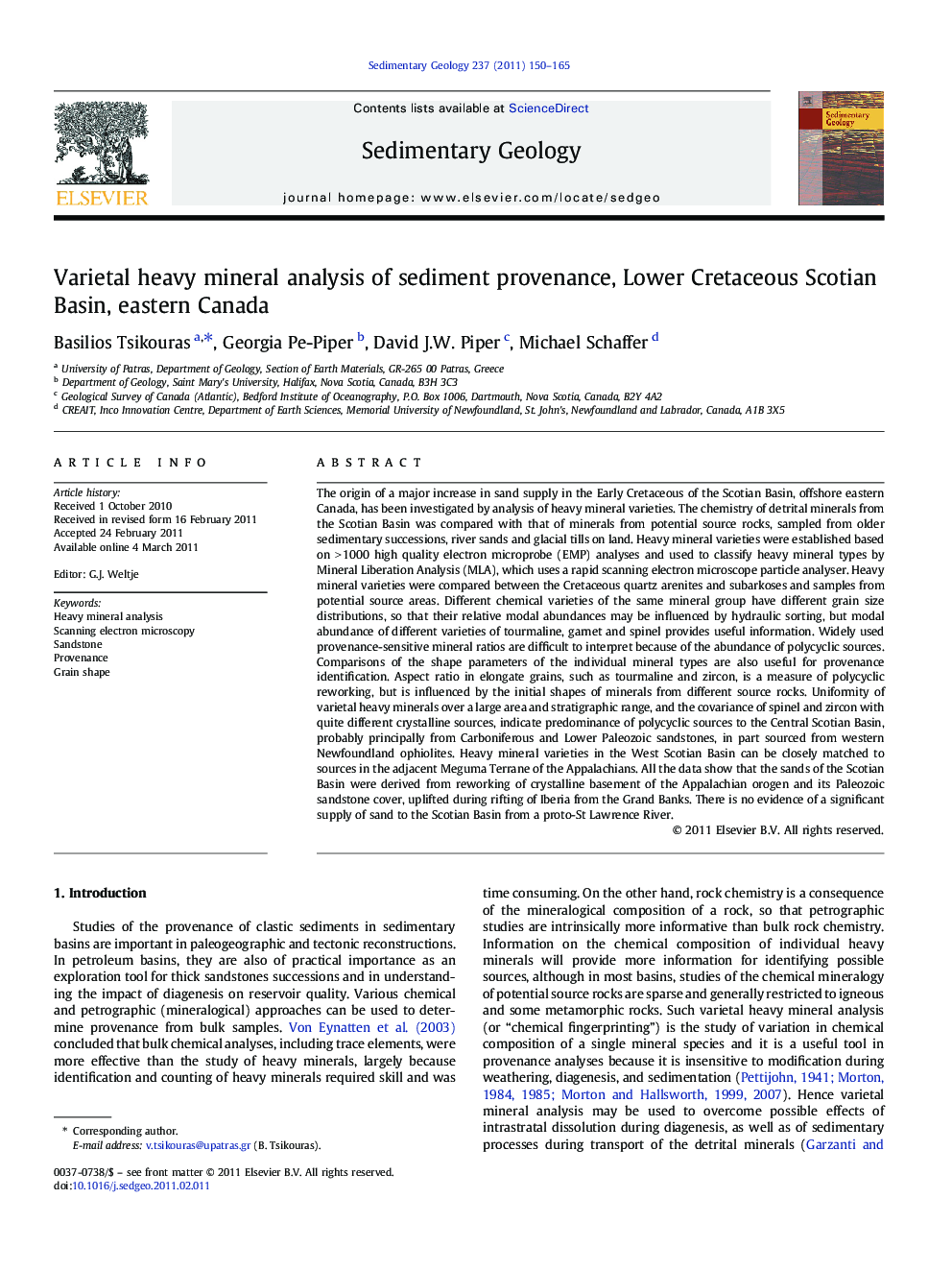| کد مقاله | کد نشریه | سال انتشار | مقاله انگلیسی | نسخه تمام متن |
|---|---|---|---|---|
| 4690047 | 1636108 | 2011 | 16 صفحه PDF | دانلود رایگان |

The origin of a major increase in sand supply in the Early Cretaceous of the Scotian Basin, offshore eastern Canada, has been investigated by analysis of heavy mineral varieties. The chemistry of detrital minerals from the Scotian Basin was compared with that of minerals from potential source rocks, sampled from older sedimentary successions, river sands and glacial tills on land. Heavy mineral varieties were established based on > 1000 high quality electron microprobe (EMP) analyses and used to classify heavy mineral types by Mineral Liberation Analysis (MLA), which uses a rapid scanning electron microscope particle analyser. Heavy mineral varieties were compared between the Cretaceous quartz arenites and subarkoses and samples from potential source areas. Different chemical varieties of the same mineral group have different grain size distributions, so that their relative modal abundances may be influenced by hydraulic sorting, but modal abundance of different varieties of tourmaline, garnet and spinel provides useful information. Widely used provenance-sensitive mineral ratios are difficult to interpret because of the abundance of polycyclic sources. Comparisons of the shape parameters of the individual mineral types are also useful for provenance identification. Aspect ratio in elongate grains, such as tourmaline and zircon, is a measure of polycyclic reworking, but is influenced by the initial shapes of minerals from different source rocks. Uniformity of varietal heavy minerals over a large area and stratigraphic range, and the covariance of spinel and zircon with quite different crystalline sources, indicate predominance of polycyclic sources to the Central Scotian Basin, probably principally from Carboniferous and Lower Paleozoic sandstones, in part sourced from western Newfoundland ophiolites. Heavy mineral varieties in the West Scotian Basin can be closely matched to sources in the adjacent Meguma Terrane of the Appalachians. All the data show that the sands of the Scotian Basin were derived from reworking of crystalline basement of the Appalachian orogen and its Paleozoic sandstone cover, uplifted during rifting of Iberia from the Grand Banks. There is no evidence of a significant supply of sand to the Scotian Basin from a proto-St Lawrence River.
Journal: Sedimentary Geology - Volume 237, Issues 3–4, 1 June 2011, Pages 150–165